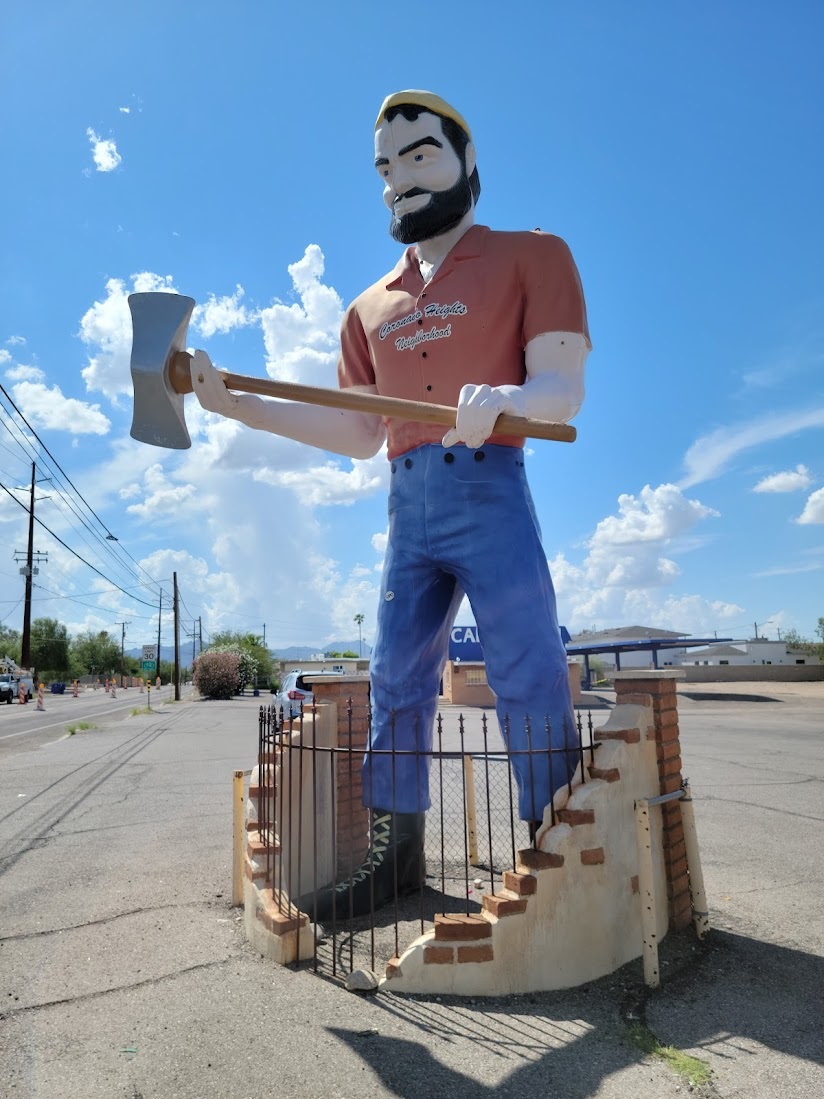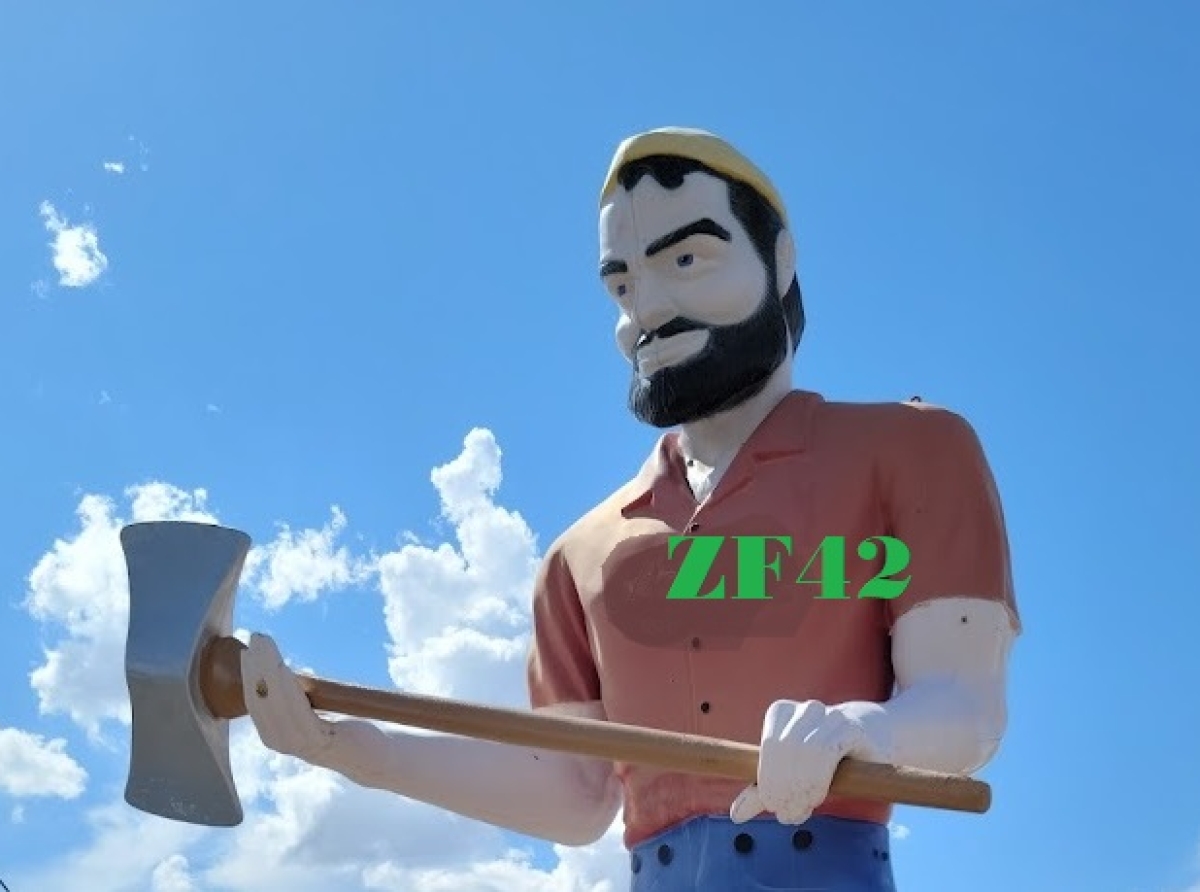Paul Bunyan Statue in Tucson - A Cultural Icon at Risk
With an uncertain future, do to possible sale of the property, Paul Bunyan Statue in Tucson could be removed. "Poor Paul", exclaimed curent curator. The famous statue has been a literal icon and symbol of Tucson culture for many decades. It has been featured in films such as "Rush Hour," "Pee-wee's Big Adventure," "Revenge of the Nerds," "Easy Rider," and "Alice Doesn't Live Here Anymore," as well as countless commercials, music videos, and Tucson lore. During COVID-19, he wore a mask. During the Iraq War, he was ready for battle, and during 9/11, he was a first responder. The figure has also been an unlocked key childhood memory for many Tucsonans.

Statue at its current location at Stone and Glenn In Tucson Arizona.
Here's a brief history of this beloved landmark:
- 1964: Leo Toia purchased the 6.096-meter (20-foot) statue from a trade show in San Francisco for his auto parts store, Leo's Auto Supply.

Image Caption 2
- Community Symbol: The statue has been a landmark at the corner of Stone and Glenn since 1964.
- Adaptations: Over the years, the statue has been dressed up for various occasions, such as wearing a Santa suit during Christmas and holding an American flag during Desert Storm.

- Cultural Impact: The statue has been featured in films like "Rush Hour," "Pee-wee's Big Adventure," "Revenge of the Nerds," "Easy Rider," and "Alice Doesn't Live Here Anymore," as well as numerous commercials and music videos.
- Police Pranks: Local Legend has it, that TPD (Tucson Police Department), used to prank its own new rookies by calling over the raido that a man with an ax was spotted near Glenn and Stone, prompting the flat foot to soon inspect the 20 ft fiberglass statue.
- Current Situation: The statue's future is uncertain as the property it stands on is being sold, and the new owners will decide its fate.
As the community waits for a decision, the Paul Bunyan statue continues to stand as a testament to Tucson's rich history and cultural significance. Its fate remains a matter of great importance to locals who have grown up with this towering figure as a part of their daily lives.

- Controversy: There is controversy surrounding some of the children's literature that was published in the early 1900's. Bunyan stories often depicted minorities in a stereotypical or offensive manner. They often glorified deforestation and the displacement of Native Americans and African American communities. During the 1930s, around 400,000 Black Americans migrated from the rural South to the North in search of employment opportunities and a respite from the pervasive racial violence of the South. This mass migration significantly impacted many cities, including those depicted in historical maps of the era.
The connection between the migration of Black Americans to the North during the 1930s and the Paul Bunyan controversy lies in the broader context of American folklore and cultural representation. Paul Bunyan, a giant lumberjack from American and Canadian folklore, symbolizes the logging industry and the expansion of the American frontier. However, the stories and statues of Paul Bunyan often overlook the contributions and experiences of Black Americans and other marginalized groups who were part of the labor force during that era.
The controversy surrounding Paul Bunyan highlights issues of representation and historical accuracy, as well as the need to acknowledge the diverse groups that contributed to the development of the American landscape. By examining these stories through a critical lens, we can better understand the complexities of American history and the impact of folklore on cultural memory.
Paul Bunyan Statue Currently still resides at the corner of Glenn and Stone in Tucson, Arizona.

